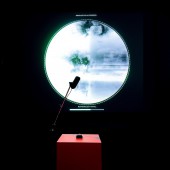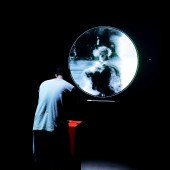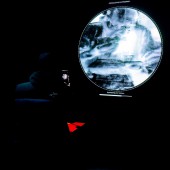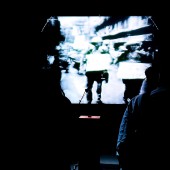ReCollection Interactive AI Art Experience Design by Weidi Zhang and Jieliang Luo |
Home > Winners > #157648 |
 |
|
||||
| DESIGN DETAILS | |||||
| DESIGN NAME: ReCollection PRIMARY FUNCTION: Interactive AI Art Experience Design INSPIRATION: ReCollection was born of witnessing my grandmother's memory regression due to dementia, where her cherished stories dissolved into fragmented words. Since 2020, over 50 million people have faced this painful reality of memory loss due to Alzheimer's and related dementias. Yet, amidst this poignant backdrop, the emergence of text-to-image AI systems in 2022 offered a glimmer of new perspective, as they harnessed the power of language to imagine and reassemble fragmented memories. UNIQUE PROPERTIES / PROJECT DESCRIPTION: ReCollection is an AI art experience that synthesizes personal memories based on users’ language input, blurring the boundaries between remembrance and imagination through AI system design and experimental visualization. Beyond its potential as a future therapeutic prototype for dementia groups, this work provides new possibilities for collective memories and cultural reproduction. OPERATION / FLOW / INTERACTION: In the art installation, a participant will whisper fragmented memories into the microphone. The AI system will automatically fill in the details of the spoken words to complete the text with a narrative using the GPT-4, a large language model. The completed narrative will be sent to Stable Diffusion to generate synthetic images representing the memories based on the machine’s interpretation. The images output by machines is further developed and visualized algorithmically as an evolving interactive experience. PROJECT DURATION AND LOCATION: Duration varied (Interactive work) Location: this project has been presented in Los Angeles Convention Center (United States), Signal Immersive Art Gallery (Canada), Media and Immersive eXperience Center (United States), and will be presented at Cinema Mystica (Hungary) |
PRODUCTION / REALIZATION TECHNOLOGY: ReCollection integrates AI systems and experimental visualization into the design of an interactive art experience. By employing AI techniques like speech recognition, text auto-completion, and text-to-image models, it translates voice inputs of fragmented language into moving computer graphics in real-time. In the art installation, ReCollection invites participants to share their personal memories in one sentence. The AI system then transforms speech to text and automatically fills in details as a completed narrative, generating new visual memories. SPECIFICATIONS / TECHNICAL PROPERTIES: Space Dimensions: While adaptable to different room sizes, we suggest a space dimension of 7m x 7m x 4m (L x W x H) to achieve the desired projection size and quality. ReCollection was displayed as an interactive art installation incorporating a wall projection or an LED screen, and a pedestal positioned to face the projection. This pedestal was designed to hold a microphone and a USB button for interactivity. Our exhibition space was intentionally designed in a dark environment, lit by the projection light and a dimmed spotlight situated atop the pedestal. Technical Properties: 1. Audio Setup: A speaker tailored for the audio component. 2. Main Pedestal: This will house both the USB microphone and a USB button. 3. Instruction Pedestal: A separate pedestal dedicated solely for the placement of instructions. 4. A USB Microphone 5. A PC 6. A 4K capable projector. TAGS: generative design, data visualization, interactive AI art RESEARCH ABSTRACT: This artwork was born of witnessing my grandmother's memory regression due to dementia, where her cherished stories dissolved into fragmented words. Dr. Mary Steedly once described memories as a "densely layered, sometimes conflictual negotiation with the passage of time", and in 2022, over 50 million people faced this painful reality of memory loss due to Alzheimer's and related dementias. Yet, amidst this poignant backdrop, the emergence of text-to-image AI systems in 2022 offered a glimmer of new perspective, as they harnessed the power of language to imagine and reassemble fragmented memories, possibly to weave what time and disease had stolen. When we coexist with machines, will we accumulate synthetic recollections of collective symbiotic imagination? Is language capable of re-weaving and synthesizing memories? How does our collective memory inspire new visual forms and alternative narratives? Recollection is an assemblage of intimate human-machine artifacts that emphasizes the contributions from three sides: artists, machines, and participants. This customized AI application facilitates multiple AI techniques, like speech recognition, text auto-completion, and text-to-image, to convert language input into image sequences of new memories. As an interactive experience, participants will whisper their personal memories with fragmented sentences, and our system will automatically fill in details, creating new touching visual memories. We developed our customized AI system by fine-tuning a pre-trained transformer-based AI model to learn the documentaries of Alzheimer patients’ visual memories and their descriptions. The system imagines new memories of "love" and "loss" by interpreting real-time narratives from participants in the installation. Our system emerges as a vibrant and inclusive conversation starter, transcending boundaries with support for over 89 different languages, embracing the diverse cultural artifacts. We did not employ the generative visual output from our AI system as our final delivery in the installation. Instead, we draw inspiration from Monotype, a printmaking technique with a history that dates back to the 1640s, which produces unique visualizations on paper through printing and reprinting. Therefore, we program our system to automatically transform the machine-generated visuals algorithmically into an evolving real-time visualization with a unique aesthetic through image processing and experimental data visualization. By providing a conceptual framework for non-linear narratives, which constitute symbiotic imaginations, and future scenarios of memories, culture production, and reproductions. It may inspire the cure for memory regression by providing a future scenario, a thought experiment, and an intimate recollection of symbiosis between beings and apparatus. It raises people's awareness of future memory preservation and their empathy for the dementia community through a personalized aesthetic experience. It offers an artistic approach and future prototype for cultural heritage reproduction and re-imagination and explores the tensions that exist in the co-relations between visual representations, language, and narratives. CHALLENGE: In ReCollection, AI is engaged in the decision-making process in imaginative acts. Presently, AI's role in dementia research spans from early detection and progression mapping of the disease to serving as companion for individuals with dementia. However, the utilization of AI in dementia research often remains confined to caregiving roles, rarely exploring its potential in more symbiotic, imaginative collaborations. Drawing inspiration from the development of dementia research and its critical turn, ReCollection investigates connections among language, memory, and imagination through integrating AI as a non-human narrative agency in collaborative worldmaking, investigating the artistic expression of memory and narratives. We have developed an interactive AI-powered story-generation system, comprising three major components that synergize to create a comprehensive narrative experience, each contributing to a seamless storytelling process. The system begins with Whisper an advanced speech-to-text model developed by OpenAI, capable of transcribing spoken words into written text. Significantly, Whisper supports 98 languages. For the second component, we employ GPT- 4 for text completion. Drawing inspiration from documentaries on Alzheimer's, such as A Marriage to Remember. we've defined two distinct agents in the prompts. The first agent controls the content, ensuring the narrative is coherent and contextually relevant, while the second agent influences the visual style, akin to how a camera lens or shooting angle might affect the visualization in a film. This dual-agent approach effectively creates a storyboard in written form, adding a layer of depth and sophistication to the generative narrative. Lastly, our system integrates Stable Diffusion APIs provided by Replicate. Stable Diffusion is a text-to-image model, to convert the written narrative into vivid visual representations. This not only enriches the storytelling with illustrative content but also ensures that the visual output is as engaging and immersive as the written story. Collectively, these components synergize to create a dynamic narrative experience for creative expression. We notice that our system can culturally adapt the visual output to match the input language. This allows for a nuanced and culturally sensitive storytelling experience, enhancing the relevance and immersion of the narrative. Leveraging the collective strengths of each AI model, ReCollection produces a personalized and engaging user experience that pushes the boundaries of traditional storytelling. ADDED DATE: 2024-02-07 22:32:05 TEAM MEMBERS (2) : Weidi Zhang and Jieliang Luo IMAGE CREDITS: credit to Weidi Zhang and Jieliang Luo |
||||
| Visit the following page to learn more: https://www.zhangweidi.com/recollection | |||||
| AWARD DETAILS | |
 |
Recollection Interactive Ai Art Experience Design by Weidi Zhang and Jieliang Luo is Winner in Idea and Conceptual Design Category, 2023 - 2024.· Read the interview with designer Weidi Zhang and Jieliang Luo for design ReCollection here.· Press Members: Login or Register to request an exclusive interview with Weidi Zhang and Jieliang Luo. · Click here to register inorder to view the profile and other works by Weidi Zhang and Jieliang Luo. |
| SOCIAL |
| + Add to Likes / Favorites | Send to My Email | Comment | Testimonials | View Press-Release | Press Kit |
Did you like Weidi Zhang and Jieliang Luo's Idea Design?
You will most likely enjoy other award winning idea design as well.
Click here to view more Award Winning Idea Design.








